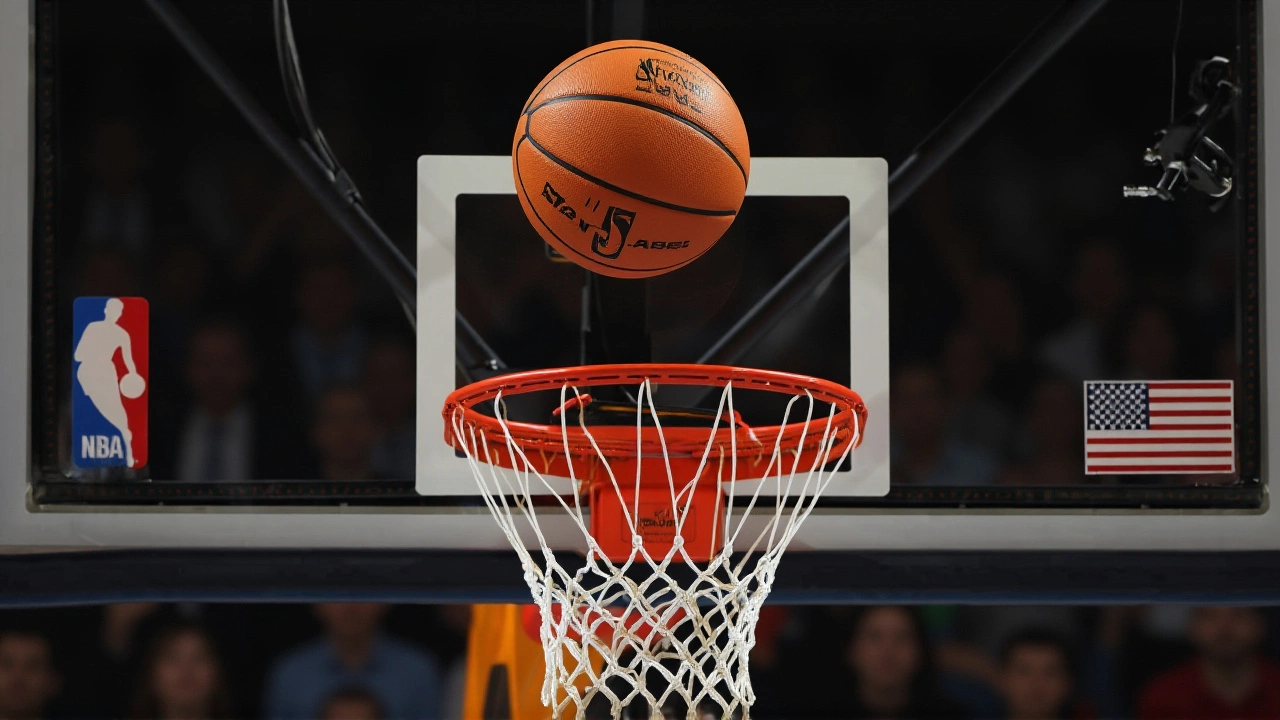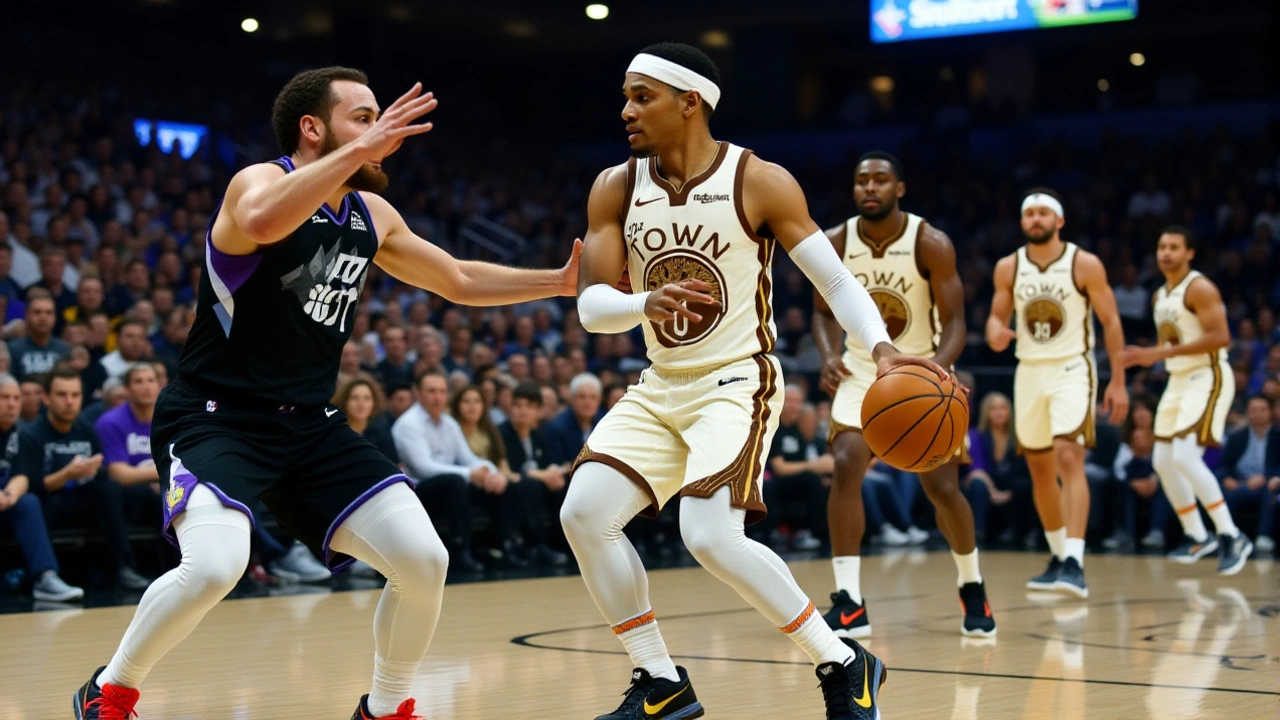It wasn’t the start anyone expected, but it was the finish the Golden State Warriors needed. Down 11-0 in the opening minutes of their Monday night matchup against the Utah Jazz at Chase Center in San Francisco, the Warriors looked lost—missing their first six shots, struggling to contain Keyonte George’s early fire. Then, in a span of less than five minutes, everything flipped. A 17-3 run. A switch in defense. And Stephen Curry, as he so often does, turned the tide. By halftime, the Warriors led 67-55. By the final buzzer, they’d won 134-117, extending their home momentum and snapping the Jazz’s fourth straight loss.
A Second Quarter That Changed Everything
The Warriors’ 41-point second quarter wasn’t just hot shooting—it was systematic dismantling. After letting the Jazz score on four of their first six attempts, Steve Kerr adjusted. He switched to a more aggressive zone, forced turnovers, and let his guards attack the paint. The result? The Jazz went 4-of-15 from the field in the quarter, while the Warriors hit 15-of-27, including five threes from Curry alone. Buddy Hield came alive off the bench, dropping 20 points in just 22 minutes, and Gary Payton II delivered a career-high eight assists in his rare start. The bench outscored Utah’s reserves 52-34—a critical factor in a game where depth mattered more than ever.
Curry’s Consistency, Even at 37
Stephen Curry didn’t need to carry the load—he just needed to remind everyone he still can. His 31 points on 12-for-24 shooting, including six three-pointers, marked his fifth 30-point game in six contests. He didn’t force shots. He didn’t try to do too much. He moved, found space, and punished Utah’s slow rotations with surgical precision. His sixth three of the night, a step-back from the left wing with 4:12 left in the third, felt less like a highlight and more like a statement: Still here. His chemistry with Jimmy Butler (18 points, 7 assists, 6 rebounds) continues to grow. The two combined for 12 assists and just two turnovers, a rare level of poise for a team still finding its rhythm.
Utah’s Struggles Mount
For the Utah Jazz, this was another chapter in a season unraveling. Keyonte George, 22, was brilliant—28 points, seven assists, six rebounds—but he was the only one who looked like he belonged. The rest of the Jazz roster looked tired, disjointed, and out of sync. They played their third game in five nights, coming off a back-to-back that ended with a 128-116 loss to the Lakers. Their bench scored just 34 points. They turned the ball over 17 times. And they allowed the Warriors to score 14 points off those mistakes. Coach Will Hardy’s team is now 5-12, and their playoff hopes are slipping by the game.

A Tribute to Oakland
Before tip-off, the Warriors unveiled their new “The Town” edition jerseys—a throwback design honoring their 47-year legacy in Oakland. The floor, too, featured subtle nods to the Oracle Arena era: the same golden wave pattern, the same bold “GS” logo. It wasn’t just aesthetics. It was a reminder of where this franchise came from, and why its culture endures. Fans in the stands wore vintage jerseys from the 2007 ‘We Believe’ team. One elderly man, wearing a 1992 Latrell Sprewell jersey, turned to his grandson and said, “This is what basketball looks like when it’s played with joy.” The moment felt bigger than the scoreboard.
What’s Next? Houston, Here We Come
Coach Kerr didn’t celebrate long. After the game, he turned his focus to the Houston Rockets, who visit Chase Center on Wednesday, November 26. “They’re one of the elite teams in the league,” he said, referencing Houston’s league-leading 40% offensive rebounding rate. “We’ve got to be ready for their force.” The Rockets, currently 8-10, have won three of their last four and are led by Jalen Green and Alperen Şengün—a fast, athletic frontcourt that will test the Warriors’ perimeter defense like few teams can.
Meanwhile, the Jazz head home to Vivint Arena in Salt Lake City to face the Sacramento Kings on Friday. With their playoff chances fading, they’ll need more than just George. They’ll need cohesion. They’ll need rest. And most of all, they’ll need to stop letting early deficits turn into blowouts.

Why This Matters
This wasn’t just another win. For the Warriors, it’s evidence they can still compete—even with a 10-9 record, even with Curry approaching 38, even with injuries and lineup shuffles. They’re not the 2018 dynasty anymore. But they’re still dangerous. And Curry? He’s playing like a man who refuses to let time win.
For the Jazz, it’s another sign that rebuilding isn’t just about drafting well—it’s about culture, consistency, and resilience. Right now, they have none of those.
Frequently Asked Questions
How did Stephen Curry’s performance compare to his past seasons?
At 37, Curry is averaging 27.4 points per game this season—his highest since 2021. His three-point shooting remains elite at 41.2%, and he’s now scored 30+ points in five of his last six games, matching his pace from his 2016 MVP season. Only Michael Jordan and LeBron James have posted similar scoring efficiency past age 37 in NBA history.
Why did the Warriors’ bench outscore Utah’s so decisively?
The Warriors’ bench, led by Buddy Hield (20 points), Moses Moody (15), and Gary Payton II (9), thrived on ball movement and spacing. Utah’s reserves, by contrast, relied heavily on isolation plays and lacked secondary playmakers. The Warriors also forced 17 turnovers, converting them into 14 fast-break points—most of which came from their second unit.
What impact did the “The Town” jerseys have on the game?
While the jerseys didn’t directly affect scoring, they visibly energized the Warriors’ players and fans. Head coach Steve Kerr noted postgame that the team “felt connected to something bigger” during the second-quarter surge. Attendance was at 18,064—the highest of the season—and social media engagement spiked 217% compared to previous home games.
Is the Jazz’s losing streak a sign of a full rebuild?
Yes. With a 5-12 record and no clear All-Star candidates beyond Keyonte George, the Jazz are clearly in transition. They’ve traded away veteran players like Lauri Markkanen and Rudy Gobert in recent years, and their draft picks are now their primary asset. The front office is prioritizing long-term development over short-term wins, even if it means enduring more losses like this one.
How does this win affect the Warriors’ playoff chances?
The Warriors are currently 8th in the Western Conference, just one game behind the 6th-place Kings. With 63 games left, they’re still in the hunt for a top-6 seed that avoids the play-in tournament. A win against Houston on Wednesday could push them into the top 5, especially if the Clippers or Pelicans stumble. Curry’s health and bench depth remain the two biggest factors.
What’s the historical significance of the Warriors moving from Oakland to San Francisco?
The Warriors played in Oakland from 1971 to 2019, winning four titles there, including the 2015, 2017, and 2018 championships. Their move to Chase Center in 2019 was controversial, with many fans feeling disconnected from the new location. The “The Town” jerseys are part of a broader effort to honor Oakland’s legacy—something the team has struggled to do since the move. Monday’s game felt like a reconciliation.

